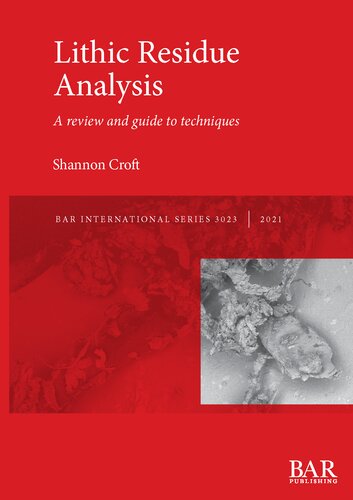

Most ebook files are in PDF format, so you can easily read them using various software such as Foxit Reader or directly on the Google Chrome browser.
Some ebook files are released by publishers in other formats such as .awz, .mobi, .epub, .fb2, etc. You may need to install specific software to read these formats on mobile/PC, such as Calibre.
Please read the tutorial at this link: https://ebookbell.com/faq
We offer FREE conversion to the popular formats you request; however, this may take some time. Therefore, right after payment, please email us, and we will try to provide the service as quickly as possible.
For some exceptional file formats or broken links (if any), please refrain from opening any disputes. Instead, email us first, and we will try to assist within a maximum of 6 hours.
EbookBell Team

4.7
96 reviewsArchaeological lithic residue analysis investigates the microscopic and chemical traces left behind by people on stone tools. These lithic residues provide detailed and compelling evidence of specific food and technological activities, and tool manufacturing choices. Interest in the study of lithic residues has grown substantially in the past decade, reflected by an increasing number of publications and a proliferation of techniques applied to their study. This monograph offers a recent and critical review of these technical advances to help archaeologists determine best practice today. The book focuses on the development of appropriate methods for improving the identification and interpretation of residues on stone tools. Over 40 techniques are reviewed, including transmitted and reflected visible light microscopy (VLM), scanning electron microscopy-energy dispersive X-ray spectroscopy (SEM-EDS), Raman microspectroscopy, gas chromatography-mass spectrometry (GC-MS), and Fourier transform infrared microspectroscopy (FTIRM).